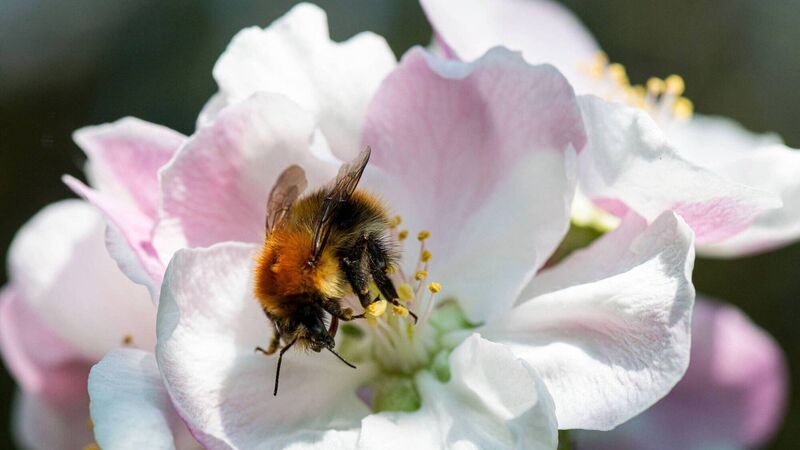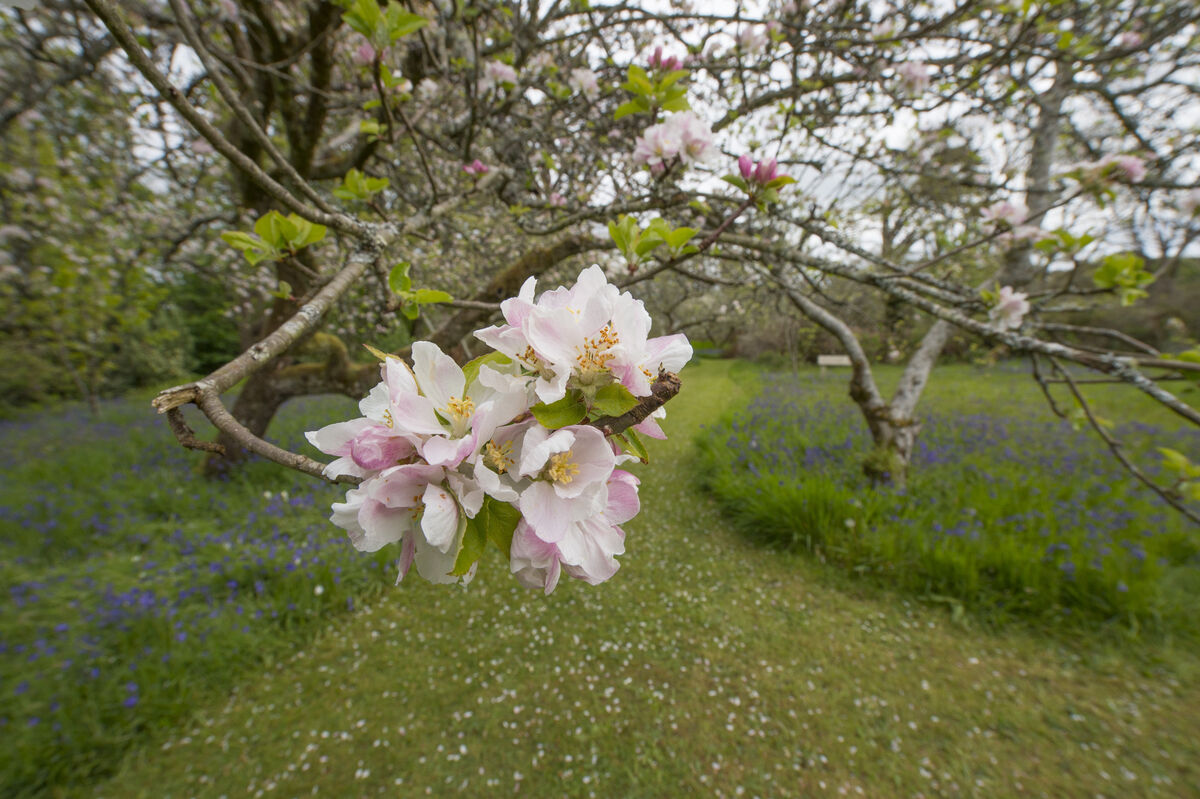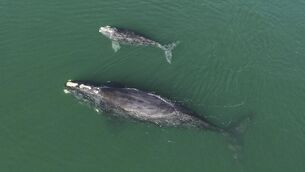Anja Murray: Do more for pollinators by doing less in the garden

A bee's body is covered with tiny hairs, which accumulate static from the flying motion. When the bee lands on a flower, the static causes pollen to cling to these hairs — like when you rub a balloon in your hair and it sticks there. The bee can then easily rub herself down and push all the pollen in to her pollen baskets Picture: Alamy/PA
In the garden, the apple blossoms are buzzing with bees — a sound that reassuringly reminds me that sunny spring and summer days are returning. I watch as bumblebees gather up pollen from the yellow anthers dangling from the centre of each pale pink flower that they visit, earnestly stuffing the particles in to the pollen baskets on their hind legs.
These pollen baskets fascinate me. They are like perfectly formed knapsacks attached to the bee’s hind legs, just below the knee. The bees have no need to go to any great effort to collect up the pollen, as evolution has already perfected the relationship between the flowers and the bees.
The apple blossoms, along with literally millions of other flowering plants relying on pollinators to transport their genetic code among their kind, have co-evolved with pollinating insects to make sure that pollen is easily transferred. Bees in particular have evolved efficient hacks for gathering up and transporting nutritious, protein-rich pollen.
For a start, each bee's body is covered with tiny hairs, which accumulate static from the flying motion. When the bee lands on a flower, the static causes pollen to cling to these hairs — like when you rub a balloon in your hair and it sticks there. The bee can then easily rub herself down and push all the pollen in to her pollen baskets... an easy way to transport a lot of pollen.

Why are these bees so obsessed with collecting pollen? Well, during spring, bumblebee queens are busily establishing a nest, each species with its own special requirements for nesting. Some nest in undisturbed soil, perhaps a tiny hollow in a hedge bank. Others have evolved to nest in a small, dry cavity among the canopy of a tree. Carder bees will nest in the grass and comb (‘card’) the grass with their legs to create a nest.
One of the first things she does when setting up a up home, is to create a kind of pancake made from pollen and spittle, which she then lays her first batch of eggs upon, sealing them in safely with a wall of wax. Beside the eggs she crafts a little pot, a place to store some sugary, energy rich nectar that will sustain her as she stays near the eggs to keep them warm. When the eggs hatch in to bee larvae, she leaves out a feed of nectar and pollen for them. These will grow to be worker bees, all female, and it is they who will help build and care for the colony as the summer progresses.
In Ireland, there are 20 different species of bumblebees. So far on the apple blossom trees in the garden, I’ve seen several species of bumblebee and a few honeybees too. There are another 80 different species of solitary bees which are a little trickier to identify.
Bees are having a moment, there’s a lot of talk about saving bees and doing various things to save them from further declines, though there are huge misconceptions about bees in that most people assume all bees are honey bees. In truth, of the 20,000 species of bee worldwide, 95% of these are solitary rather than social bees — and solitary bees don’t make honey at all!
I constantly encounter well-meaning community or business initiatives in which people decide that setting up a few honey bee hives is a good idea to tackle the biodiversity crisis. This is like being worried about the decline of wild birds and deciding to get a few hens as a response. Honey bees are not native, nor are they endangered.[exa.mn/zoh]
Native bees, on the other hand, are very much in decline, finding good sources of pollen harder to find, and nesting sites unavailable too. In Ireland, of the 100 species of native bee, one third of our wild bees are threatened with extinction, finding themselves starving and homeless in increasingly inhospitable landscapes. Declines are driven by habitat loss, for example, flower-rich meadows that were abundant 30 years ago, providing food and nesting resources for bees and lots of other insects besides, are now few and far between. The more intensively we use land, for agriculture especially, the less space there is for wild bees. Pesticide use is also taking its toll on bees, as well as butterflies, moths, grasshoppers, ladybirds, shield bugs, and lots of other species groups too. Climate change and extreme weather events exacerbate the challenges they face.
The good news is that we have a very good understanding of these threats and pressures, and what can be done to reverse the declines. Each of us can contribute to solutions.
On farmland, leaving flower-rich pasture and meadows in place is especially important, rather than reseeding with less diverse grass species. Fertilisers reduce wildflower diversity. Flowering native hedges, unmowed fields and roadside verges, and pockets of land where wild species are given a chance to grow, all of these provide crucial pollinator habitats.
City and county councils have an enormous role to play, integrating pollinator friendly practices in to the many ways these authorities manage public land, including planting native trees in urban areas; establishing long meadows in public parks; minimising the use of pesticides; and encouraging and protecting biodiversity through the planning process.
Businesses can do much to minimise harm and to lead by good example, forgoing tidy lawns for long meadows, putting away the pesticides, and facilitating native trees and plants.
Anyone with a garden can provide food, in the form of pollinator-friendly perennial flowers, especially native plant species, for wild bees. Native trees with rich spring blossoms are crucial for bees. Easing up on pesticide use is important too. Providing safe places for bees to nest provides a lifeline to wild bees. Overgrown, messy corners and undisturbed pockets of the garden allow bees to complete their life cycle.
As bees are getting busy, participate in #NoMowMay, or better still, mow less from April until September and do all within your power to provide the food and shelter that our wild bees so desperately need.
The All-Ireland Pollinator Plan has excellent guidance on how to help pollinators.







